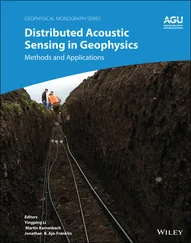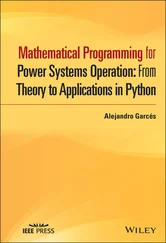| Concept |
Example |
| Centralized components |
A single mail server for all users |
| Centralized tables |
A single on-line telephone book |
| Centralized algorithms |
Doing routing based on complete information |
Fig. 1-15. Potential bottlenecks that designers should try to avoid in very large distributed systems.
Centralized tables are almost as bad as centralized components. How should one keep track of the telephone numbers and addresses of 50 million people? Suppose that each data record could be fit into 50 characters. A single 2.5-gigabyte disk would provide enough storage. But here again, having a single data base would undoubtedly saturate all the communication lines into and out of it. It would also be vulnerable to failures (a single speck of dust could cause a head crash and bring down the entire directory service). Furthermore, here too, valuable network capacity would be wasted shipping queries far away for processing.
Finally, centralized algorithms are also a bad idea. In a large distributed system, an enormous number of messages have to be routed over many lines. From a theoretical point of view, the optimal way to do this is collect complete information about the load on all machines and lines, and then run a graph theory algorithm to compute all the optimal routes. This information can then be spread around the system to improve the routing.
The trouble is that collecting and transporting all the input and output information would again be a bad idea for the reasons discussed above. In fact, any algorithm that operates by collecting information from all sites, sends it to a single machine for processing, and then distributes the results must be avoided.
Only decentralized algorithms should be used. These algorithms generally have the following characteristics, which distinguish them from centralized algorithms:
1. No machine has complete information about the system state.
2. Machines make decisions based only on local information.
3. Failure of one machine does not ruin the algorithm.
4. There is no implicit assumption that a global clock exists.
The first three follow from what we have said so far. The last is perhaps less obvious, but also important. Any algorithm that starts out with: "At precisely 12:00:00 all machines shall note the size of their output queue" will fail because it is impossible to get all the clocks exactly synchronized. Algorithms should take into account the lack of exact clock synchronization. The larger the system, the larger the uncertainty. On a single LAN, with considerable effort it may be possible to get all clocks synchronized down to a few milliseconds, but doing this nationally is tricky. We will discuss distributed clock synchronization in Chap. 3.
Distributed systems consist of autonomous CPUs that work together to make the complete system look like a single computer. They have a number of potential selling points, including good price/performance ratios, the ability to match distributed applications well, potentially high reliability, and incremental growth as the workload grows. They also have some disadvantages, such as more complex software, potential communication bottlenecks, and weak security. Nevertheless, there is considerable interest worldwide in building and installing them.
Modern computer systems often have multiple CPUs. These can be organized as multiprocessors (with shared memory) or as multicomputers (without shared memory). Both types can be bus-based or switched. The former tend to be tightly coupled, while the latter tend to be loosely coupled.
The software for multiple CPU systems can be divided into three rough classes. Network operating systems allow users at independent workstations to communicate via a shared file system but otherwise leave each user as the master of his own workstation. Distributed operating systems turn the entire collection of hardware and software into a single integrated system, much like a traditional timesharing system. Shared-memory multiprocessors also offer a single system image, but do so by centralizing everything, so there really is only a single system. Shared-memory multiprocessors are not distributed systems.
Distributed systems have to be designed carefully, since there are many pitfalls for the unwary. A key issue is transparency — hiding all the distribution from the users and even from the application programs. Another issue is flexibility. Since the field is only now in its infancy, the design should be made with the idea of making future changes easy. In this respect, microkernels are superior to monolithic kernels. Other important issues are reliability, performance, and scalability.
1. The price/performance ratio of computers has improved by something like 11 orders of magnitude since the first commercial mainframes came out in the early 1950s. The text shows what a similar gain would have meant in the automobile industry. Give another example of what such a large gain means.
2. Name two advantages and two disadvantages of distributed systems over centralized ones.
3. What is the difference between a multiprocessor and a multicomputer?
4. The terms loosely-coupled system and tightly-coupled system are often used to described distributed computer systems. What is the different between them?
5. What is the different between an MIMD computer and an SIMD computer?
6. A bus-based multiprocessor uses snoopy caches to achieve a coherent memory. Will semaphores work on this machine?
7. Crossbar switches allow a large number of memory requests to be processed at once, giving excellent performance. Why are they rarely used in practice?
8. A multicomputer with 256 CPUs is organized as a 16×16 grid. What is the worst-case delay (in hops) that a message might have to take?
9. Now consider a 256-CPU hypercube. What is the worst-case delay here, again in hops?
10. A multiprocessor has 4096 50-MIPS CPUs connected to memory by an omega network. How fast do the switches have to be to allow a request to go to memory and back in one instruction time?
11. What is meant by a single-system image?
12. What is the main difference between a distributed operating system and a network operating system?
13. What are the primary tasks of a microkernel?
14. Name two advantages of a microkernel over a monolithic kernel.
15. Concurrency transparency is a desirable goal for distributed systems. Do centralized systems have this property automatically?
16. Explain in your own words the concept of parallelism transparency.
17. An experimental file server is up 3/4 of the time and down 1/4 of the time, due to bugs. How many times does this file server have to be replicated to give an availability of at least 99 percent?
18. Suppose that you have a large source program consisting of m files to compile. The compilation is to take place on a system with n processors, where n >> m. The best you can hope for is an m –fold speedup over a single processor. What factors might cause the speedup to be less than this maximum?
2
Communication in Distributed Systems
The single most important difference between a distributed system and a uniprocessor system is the interprocess communication. In a uniprocessor system, most interprocess communication implicitly assumes the existence of shared memory. A typical example is the producer-consumer problem, in which one process writes into a shared buffer and another process reads from it. Even that most basic form of synchronization, the semaphore, requires that one word (the semaphore variable itself) is shared. In a distributed system there is no shared memory whatsoever, so the entire nature of interprocess communication must be completely rethought from scratch. In this chapter we will discuss numerous issues, examples, and problems associated with interprocess communication in distributed operating systems.
Читать дальше












